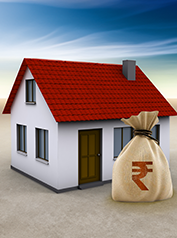Learn how maintaining the right bike tyre pressure boosts safety, fuel efficiency, and performance for both tubeless and tube tyres.
Every ride depends on one vital element—your tyres. They grip the road, carry the bike’s weight, and respond to every move you make. Maintaining the correct bike tyre pressure ensures smooth handling, strong braking, and better fuel efficiency. Whether you ride in the city or on highways, the right motorcycle tyre pressure keeps you safe and comfortable. If your bike tyre air pressure is off, it can lead to uneven wear, poor control, or even a blowout. Paying attention to this small detail makes a big difference.
Choosing the correct bike tyre pressure based on your tyre size is essential for safety, mileage, and handling. Tyre pressure needs vary depending on whether your tyres are tubed or tubeless, and whether you ride solo or with a pillion. Even a slight variation in pressure can affect your control on the road or lead to premature tyre wear. Setting the right motorcycle tyre pressure ensures the best grip, especially during braking or cornering.
Here is a detailed chart showing recommended bike tyre air pressure levels for different tyre sizes and rider conditions:
Tyre Size |
Type |
Solo (Front/Rear) |
With Pillion (Front/Rear) |
|---|---|---|---|
90/100 R10 |
Tube |
20 PSI / 26 PSI |
20 PSI / 32 PSI |
90/100 10 |
Tubeless |
22 PSI / 29 PSI |
22 PSI / 36 PSI |
120/70 14 |
Tubeless |
20 PSI / 32 PSI |
29 PSI / 34 PSI |
90/90 12 |
Tubeless |
24 PSI / 28 PSI |
24 PSI / 32 PSI |
110/70 10 (R) |
Tubeless |
20 PSI / 26 PSI |
20 PSI / 32 PSI |
120/170 10 (R) |
Tubeless |
20 PSI / 26 PSI |
20 PSI / 32 PSI |
Note: The recommended bike tyre pressure values in this table are general guidelines based on standard riding conditions. Actual motorcycle tyre pressure may vary depending on factors such as road surface, weather, outside temperature, and total load (including a pillion rider or luggage). You may need to increase the pressure by 3–5 PSI or decrease it by 2–3 PSI as per the riding environment. Always refer to your owner’s manual or consult a professional before adjusting your bike tyre air pressure.
Here are simple checks and tips to help you maintain the correct bike tyre pressure for safety and smooth performance:
Check for any cracks, cuts, or bulges along the surface of the tyre. Roll the bike forward and backward to inspect the full contact area. Sharp objects like nails can cause slow leaks and reduce motorcycle tyre pressure.
Use a reliable pressure gauge to check bike tyre air pressure before you begin riding. Cold tyres give the most accurate pressure reading. Heat from riding raises air pressure and may lead to incorrect measurements.
Use a quality air pump to fill your tyres to the correct PSI. If you over-inflate, slowly release excess air to reach the right level. Always refer to the owner's manual or tyre sidewall for exact pressure values.
Add extra pressure to the rear tyre when riding with a pillion or carrying heavy items. This improves balance and prevents tyre wear. Solo riders should maintain the standard bike tyre pressure range for better performance.
Check the tyre pressure again after riding for a few hours. A pressure rise above 10% means your tyres may be working too hard. Reduce the load or take breaks to prevent overheating.
Tread helps maintain grip, especially in wet or slippery conditions. Inspect the grooves for signs of wear or smooth patches. Replace tyres if the tread depth is less than a quarter inch.
Here is a quick comparison to help you understand the key differences between tubeless and tube-type tyres so you can make the right choice for your two-wheeler:
Feature |
Tube Tyre |
Tubeless Tyre |
|---|---|---|
Construction |
Contains a separate inner tube that holds air |
No inner tube; air is held between tyre and rim |
Air Pressure Handling |
Sudden air loss in case of puncture |
Slow air loss gives time to stop safely (bike tyre air pressure) |
Puncture Repair |
Needs tyre removal and patching of the inner tube |
Can be repaired without removing tyre, using a plug |
Repair Cost |
Low cost; uses simple patches and glue |
Slightly higher due to plug material and service charges |
Ride Safety |
Instant deflation can affect balance |
Better control due to gradual pressure loss (motorcycle tyre pressure) |
Fuel Efficiency |
Heavier due to the tube, reducing mileage |
Lighter build improves mileage (bike tyre pressure) |
Heat Resistance |
Tube can overheat, especially if under or over-inflated |
Better heat dissipation due to direct rim contact |
Rim Compatibility |
Works on all rims, including spoke wheels |
Requires airtight seal; ideal for alloy rims only |
Durability |
Prone to valve or tube damage under impact |
More durable and resistant to minor damage |
Maintenance |
Needs frequent checks and manual inspection |
Easier to manage, fewer components |
Availability of Repairs |
Easily repairable at most service stations |
Limited repair support in rural or remote areas |
Cost |
Generally cheaper upfront |
Slightly more expensive but cost-effective in the long run |
Maintaining the right bike tyre pressure is not just about comfort—it’s about safety, control, and performance. Whether you use tube-type or tubeless tyres, checking your bike tyre air pressure regularly ensures better mileage, grip, and fewer breakdowns. Understanding the differences in motorcycle tyre pressure needs helps you make smarter choices, especially when road and load conditions vary. A small habit like tyre pressure maintenance can make a big difference in how confidently and smoothly you ride every day.
Yes, tubeless tyres are usually a bit more expensive. They need stronger sidewalls and a better seal to hold bike tyre pressure without a tube. Even after adding the tube cost, tube tyres still cost slightly less.
Tubeless tyres are better for most riders. They need less maintenance, lose motorcycle tyre pressure slowly when punctured, and offer better fuel savings.
Yes, tubeless tyres can run at lower bike tyre air pressure levels. Some also have sealant that helps close small punctures, allowing safe riding until repair.
Tubeless tyres usually last between 2 to 10 years. Their life depends on brand, usage, and how well you maintain correct bike tyre pressure.
Tube tyres typically last around three years. Even if not damaged, replace them on time to avoid sudden air loss and reduce accident risks.












